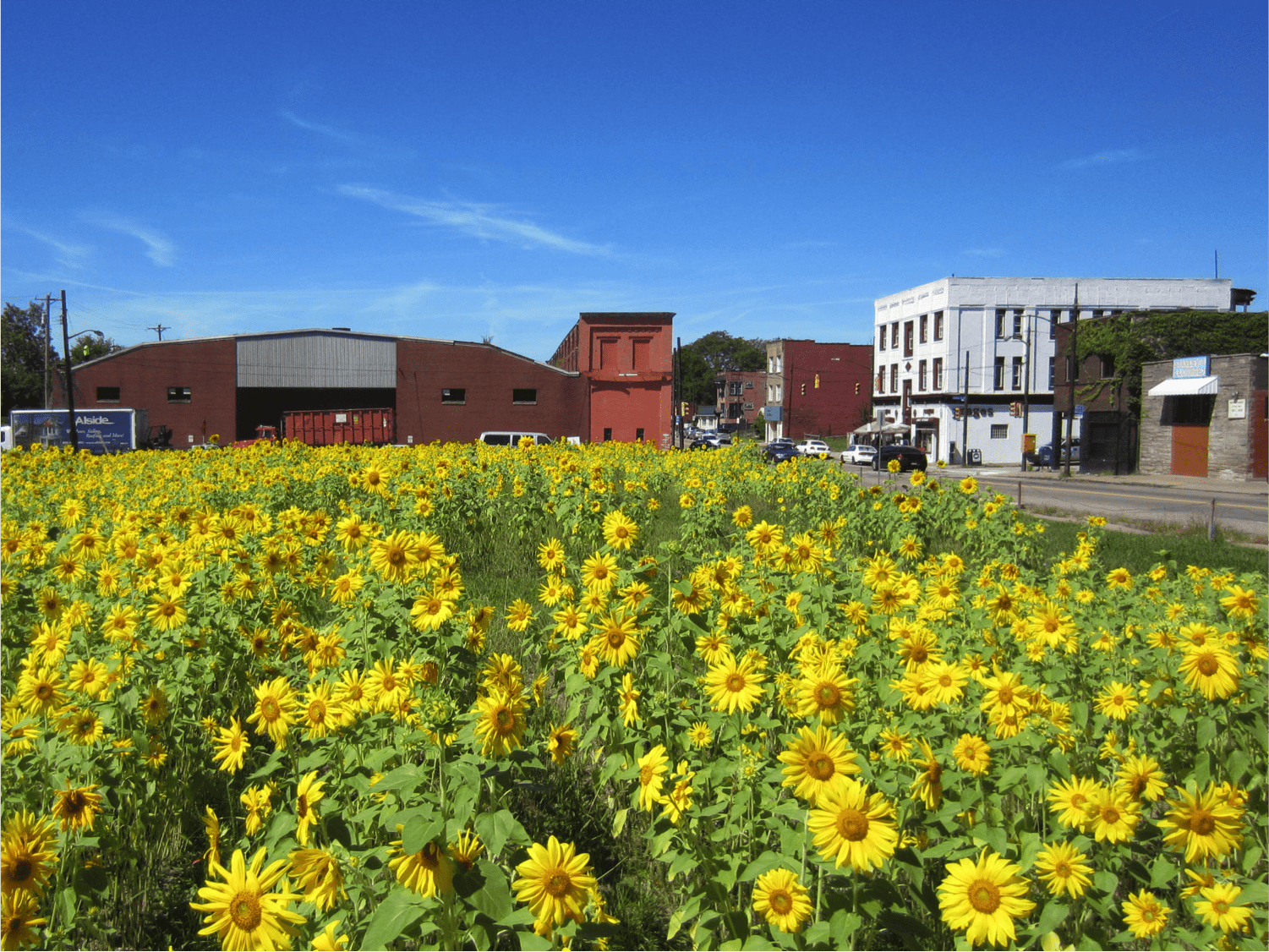
In the neighborhood of Larimer in Pittsburgh, a vacant lot was transformed into a sunflower garden. The garden yielded the city’s first-ever crop of biofuel. Photo courtesy of Andrew Butcher
The problem with vacant land is that no one owns the problem. Sure, there are plenty of owners of the actual land—private, public, and quasi-public. But the spillover problems of property disrepair and neighborhood disinvestment are the community’s to endure. So a problem that no one owns is actually everyone’s problem.
Unmanaged vacant land can affect property values, quality of life, and even mental health (both at an individual and community level). Intentional open and green space has the exact opposite effect. Vacant land in poor condition is often an indicator of poverty in the most distressed places, whereas intentional green space is an indicator of prosperity. The way to get from one to the other, however, is the lowest-cost, lowest-effort process in the world of real estate. In addition, the very process of reclaiming a vacant lot has the potential to change hearts and minds, generate engagement that can be harnessed for other ends, and provide tangible benefits to residents in the form of an improved physical environment and a social and economic return on investment. So why is the “vacant land” question frequently the last one to be asked? Why is it an afterthought when it should be the starting point of any comprehensive revitalization process?
The Development Spectrum
Because vacant land is a kind of real estate, the solutions to this challenge tend to be envisioned through a traditional real estate lens, as community development work often is. The interventions community development players often come up with for a vacant lot are not all that different than those for a property with an abandoned building. The interventions include grouping together different plots of land to maximize available space, developing financing, securing a use or occupant, design of structure, and ultimately, construction. It can be a time-intensive and capital-heavy process.
Vacant land activities, on the other hand, can be low cost and high impact; the price of failure is not steep, but the return on investment can be high. In fact the very premise of what constitutes failure can be regarded differently if we view vacant land as a space for innovation and cultivating new community leadership. In Pittsburgh, Pennsylvania, for instance, the nonprofit Grounded Strategies facilitated stipends and micro-grants of $3,000 for residents to work on vacant land projects. In Albany, New York, a similar micro-grant program is being piloted for small and simple actions on vacant land. And programs such as ioby or Kiva can serve as crowdfunding platforms to enable residents to take action where action is possible.
Where market conditions are weakest, the challenges highest, and the financial resources lowest, there is still latent potential to empower people, enable them to work on small actions, and channel those actions into influencing an ongoing development process. Vacant land can be a window into what is in a place, not just what isn’t. Participation in a shared effort to reclaim a vacant lot demonstrates grit, determination, and ingenuity, and may provide individuals with the knowledge, appreciation, and language to better participate in future neighborhood development activities.
How do we help residents take ownership in finding solutions to address distressed vacant lots in their communities? Some people would say control of the land is the most important. Other people contend that it is community empowerment and funding. Others might say that it is the presence of a comprehensive neighborhood or city plan. Lessons emerging from Pittsburgh, Albany, and Toledo suggest it is all of the above.
Residents must have access to the land even if they don’t yet have full or permanent control.
With that access, tangible actions must be encouraged by public authorities. Not all actions on vacant land can, or should, be permanent. Certainly, permanent green space is an asset for a community, but creating it requires significant time and resources. Vacant land can be used much more quickly in temporary ways (i.e. gardens, parklets, public art) to address immediate problems in a place, while also mobilizing and empowering residents. Doing this will position a community to have better financial resources and a more coordinated voice when advocating for bigger projects, including permanent green space.
Finally, alignment of these actions and engaged actors should inform and fuel an equitable, inclusive, participatory planning process with public agencies, which can lead to an upward spiral of community investment.
Carrying out the access, action, and alignment process requires a delicate dance between public agencies and community groups at the most granular level. The process of turning vacant land liabilities into community assets requires a different mindset than traditional real estate development.
Vacant Land: Transformation from the Ground Up
In Pittsburgh, which has lost 60 percent of its population in 60 years, close to 30,000 vacant lots are scattered across the city, largely concentrated in the poorest neighborhoods. This vacant land is increasingly seen as an asset by the general public. Community-led efforts are using it as a platform to educate and empower residents to take action, being linked to educational, training, and employment opportunities, and galvanizing multi-organizational collaboration that ultimately informs public policy.
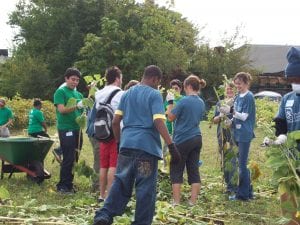
The city’s youth were employed through a summer workforce training program, and they prepped, planted, and maintained the sunflowers. Photo courtesy of Andrew Butcher
One of the places this attitude toward vacant land took root in Pittsburgh is the neighborhood of Larimer, which has among the highest vacancy, crime, and poverty rates in the city. In 2008, the Urban Redevelopment Authority (URA) acquired multiple vacant, overgrown lots in the neighborhood that were filled with brick and debris. The URA and Jackson Clark Partners created a consensus planning process with multiple teams, including what came to be known as the “Green Team” to tackle vacant land as a major priority. My organization, Grounded Strategies (then known as GTECH), was contracted for approximately $10,000 to transition the largest lot into a sunflower garden. The idea was to improve soil, create a platform for green jobs, and demonstrate the production of biofuel for cleaner-burning biodiesel. The project employed youth through the city’s summer workforce training program to prep, plant, and maintain the sunflowers. The quick-execution project gave the nascent Green Team a clear sense of purpose and a tangible outcome for the group to organize around as they planned for harvest and for transition of the sunflower patch into a community garden, which is a much more complicated project to arrange. The sunflower garden yielded the city’s first-ever crop of biofuel produced from a vacant lot and brought out dozens of volunteers and residents in celebration. Some residents had been skeptical about the value of sunflowers amidst so many other needs in the community, but longtime community leaders who were passionate about horticulture, green space, and gardening were able to harness the energy of the sunflowers toward a broader neighborhood greening strategy.
This energized the Green Team and a growing group of other residents to engage a collaboration of organizations, including Grounded Strategies, Penn State Extension, the Student Conservation Association, Grow Pittsburgh, the Western PA Conservancy, and the Kingsley Association, to beautify dozens of lots within a primary corridor in the community. Those projects became the driving force for a grant application that ultimately yielded a $30 million Choice Neighborhood grant to build dozens of affordable housing units, with preserved green space as the anchor of its neighborhood plan. Ultimately, the sunflower project activated a space by engaging people to take action in a tangible and incremental way to demonstrate some kind of improvement to the area. The project also galvanized a community action team, leveraged money, anchored a community planning process around green space, and facilitated meaningful community input through the grant process.
Pittsburgh has been able to take this momentum to other parts of the city as well. Many decentralized projects, initiatives, policies, and resources have continued to activate vacant spaces, turn them from liabilities to assets for the community, even though the city’s land bank—founded in 2013 with the hope of providing a formal route to productive reuse—has been slow to get that route in place. The city now has an open data interactive resource called “Lots To Love,” which helps residents find vacant land to invest in and understand how to go about doing it. There is a mobile tool bank for residents who want to clean up and activate vacant lot, operated by Grounded Strategies in partnership with Neighborhood Allies. There is a standing meeting between nonprofits, community groups, and public agencies to tackle policy objectives through a “Green Space Alliance.” A dedicated open space specialist within the Department of City Planning screens vacant land project proposals. And a maintenance and stewardship program allows small neighborhood businesses and contractors to secure public maintenance contracts if they demonstrate meaningful engagement, outreach, and employment strategies with the neighborhoods they are charged with maintaining. Grounded Strategies Pittsburgh has even developed a way to calculate the return on investment of actions undertaken on vacant land. All of this collaboration, progress, and demonstrable impact derived from a groundswell of hyper-local actors who cared, took action, and mobilized their neighbors and networks.
Despite much progress and a unique blend of active organizations, residents, and public leadership, Pittsburgh is still struggling with how to not overly burden the process of addressing vacant land for short-term projects. Specifically, the city’s Adopt-A-Lot process, intended to give residents a way to take action on vacant land, can be costly and time consuming, which demotivates residents as opposed to empowering them. While the program aspires to “make it simple,” the current process can require months of paperwork, a financial investment of $150, liability coverage, and unclear parameters imposed by the city’s open space specialist. Many of these hurdles to development are well within the city’s prerogative. The city may not want to give people the sense that access to their space is permanent, and they certainly want to protect against unnecessary risk should someone injure themselves on site. However, the fear of permanence and liability is more reflective of development concerns at a higher end of the development spectrum and ultimately leaves some of the opportunity of vacant land development on the table.
Larimer’s story is the ideal illustration of how vacant land “development” benefits from an inverse approach to traditional real estate and economic development, which usually starts with a vision of the end goal, usually a new or rehabbed building with a specific use. Fixating on the end outcome of millions of dollars of investment and new housing may be a daunting mountain to climb from an existing vacant lot. But breaking that expedition into small victories defined by physical transformation of a lot, celebration among community, consensus in planning, and participation in decision making can lead to an upward spiral of community investment.
Larimer’s experience is also a story of how the right level of access to a space, combined with resident-driven, tangible actions can align with a public planning process to have a major imprint on the built environment in a historically disinvested community.
A Matter of Scale
In Lucas County, Ohio, demolition of vacant and abandoned properties has accelerated since 2012, fueled by the federal government’s Hardest Hit Fund (HHF), which was created in 2010 to award funds to states hardest hit by the housing and financial crisis. The program enables established land banks to receive federal assistance to eliminate abandoned structures as a tactic for mitigating the harm of vacant foreclosures, but this has resulted in a significant increase in the volume of vacant land. The initiative it took for communities to get and implement HHF funding speaks well for their capacity. This likely means increased interagency coordination, legal capability for property disposal, and an operational orientation to both mitigate liability and ensure basic maintenance of properties. That in turn means that vacant land in those portfolios can be more intentionally cultivated to serve a variety of different functions.
David Mann, CEO of the Lucas County Land Bank (LCLB), which includes the city of Toledo, says that between 2014 and 2020, HHF monies will have enabled close to 2,800 strategic demolitions in targeted neighborhoods in Toledo, increasing the total number of vacant lots in the city to over 17,000, or 14 percent of the city’s total area. “It is the largest deployment of such funds per capita in Ohio,” says Mann.
As a result, Toledo has an urgent need to devise short-term and long-term strategies to address an influx of concentrated vacant land. This opens the door to a broad array of longer-term “holding” strategies, such as forest regeneration, urban meadows, and other natural capital strategies, but the scale and rapid accumulation of parcels also has the potential to accelerate low-cost, high-impact strategies where neighborhood leaders turn their own ideas—such as play spaces, passive green space, community gardens, or public art installations—into action. The LCLB inherently represents a place where access to the land is possible and where use of the land can be aligned with a longer-term strategy to revitalize and reinvest in neighborhoods.
Specifically this represents an opportunity to align economic development and environmental health efforts. The LCLB anticipates spending approximately $3.36 million on vacant land maintenance from 2015 to 2023— approximately $375,000 per year, or $1,200 per lot. This is an opportunity to provide workforce development programs with direct contracts for on-the-job training and/or align with regional environmental efforts to leverage investments in green infrastructure.
Vacancy is a big challenge and it is understandable to want to apply big solutions like building a farm, or letting a whole block go back to nature. However, to look at vacant spaces and only see the physical challenges neglects the opportunity these spaces offer to cultivate the primary resource of any community: the people. Vacant land is the ideal starting point for a comprehensive community development process because the costs of getting started are minimal. Financially, $500 to $3,000 can yield a catalytic project that gets people involved and provides tangible outcomes to counterbalance the often monotonous conversations about planning. Even if a project fails and reverts back to an unmanaged space, there was still the value of engaging residents and enabling pathways for learning how a development process works. Of course there are pure and simple failures. But what’s lost is only a few thousand dollars and a growing season. These building blocks represent far less sunk financial, social, and political capital than traditional real estate development.
The practice of transforming vacant land must embrace:
- Small, simple actions such as beautification gardens and natural play spaces.
- Maximum citizen engagement in the planning, design, and maintenance plan of any project.
- Prioritizing resident participation in collecting necessary information and data.
- Following their lead in designing
- Fusing maintenance obligations of vacant land with education, training, and employment programs.
- Integrating vacant land activities, designs, plans, and programs with regional scale environmental objectives, such as climate action plans, resilience planning, and stormwater management systems.
To advance equity, inclusion, sustainability, and environmental justice, vacant-lot strategies should focus on providing greater access to citizens; prioritizing engagement and education; deploying micro-funds for small and tangible actions; and aligning with adjacent domains such as public health, workforce development, and environmental health. When vacant land is regarded as a common asset the process of addressing it can build a foundation of knowledge, resources, plans, and social capital to enable more ownership of solutions at a hyperlocal level.


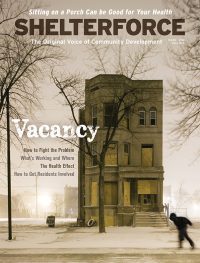
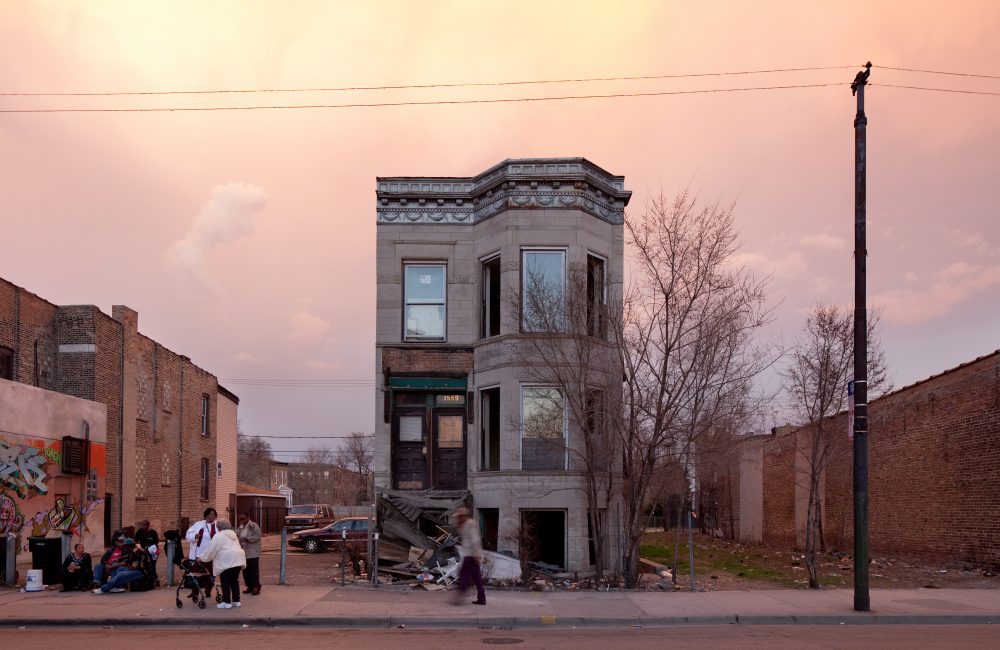
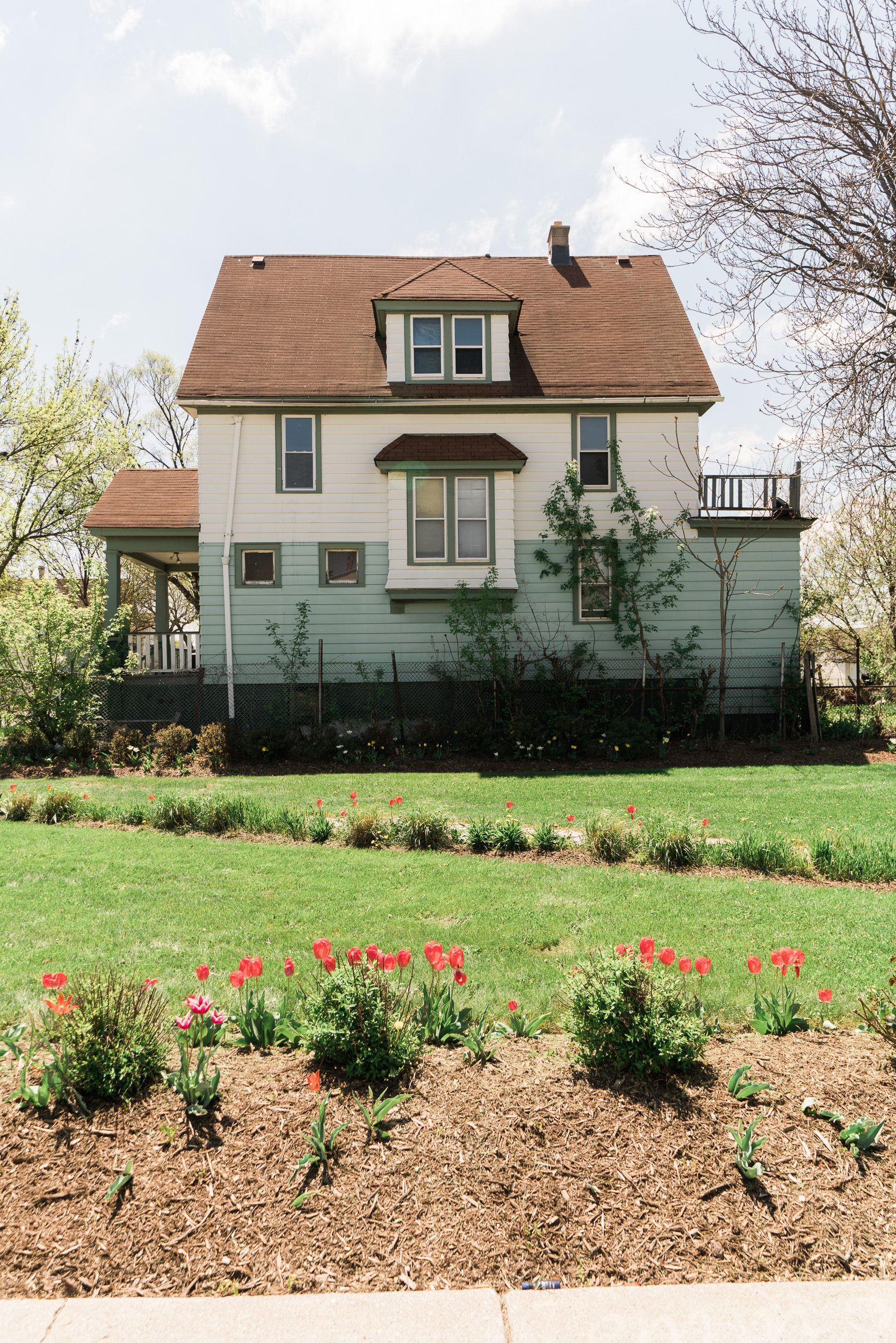
Comments